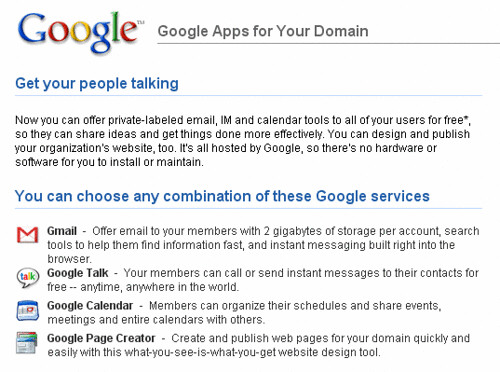Google Workspace is the evolved form of GSuite, aka Google Apps for Work or Google Apps for Your Domain. Yes, Google has changed the name a few times over the years. The one thing that has not changed is its core tenet, collaboration through cloud technology.
Today, with a renewed focus on deep level integration, utilizing Google's unique magical blend of AI, we are seeing the result of a decade and a half of innovation bringing us the future of work, accessible on any device, from anywhere.
Historically, G Suite provided teams with a means to collaborate, communicate, and innovate their digital workspace. Read on to learn more about the G Suite changes and the evolution of Google's cloud-based services.
What is G Suite?
To fully understand the new Google workspace, it's essential first to comprehend G Suite. G Suite is a collection of cloud-based communication, productivity, computing, and workflow tools that was first introduced to the public by Google in 2006.

The old G Suite workspace (see what I did there?) was initially named "Google Apps for your Domain," and the suite included Google Talk, Google Calendar, Page Creator, and Gmail. Naturally, by today's standards, this was archaic; however, at the time, it was state-of-the-art, even if it didn't have all of the features of the standalone Microsoft Office suite.
With Gmail as its cornerstone, where it had pioneered the concept of no action should take more than 100 milliseconds, everything felt fast, fresh, and very high tech. Google also pioneered the ability to do real-time editing on docs, which came later as the suite evolved.
Fast forward a decade, and Google Apps starts to grow up as web technologies matured. In 2016 it was renamed, and we began to see some serious G Suite changes as it grew into a more fully-featured online office collaboration suite.
G Suite Changes: The Transformation into Google Workspace
Just as the workforce at large has adapted to remote work, Google has also reimagined its suite of cloud-based tools to create more real-time connectivity between teams. The new Google Workspace, commonly confused as G Suite workspace, is a digital environment built for collaboration, where teammates can see and hear their project counterparts while working.
Among other G Suite changes, Google Workspace has introduced a flood of new features to help everyone stay productive through the pandemic, no matter how their "office" environment looks. Google has beefed up its video conferencing solution called Google Meet, and it is widely regarded as one of the best and simplest in the industry.
Over the years, as Google added more features and apps to the suite, there seemed to be missing a critical connection between them. Sure, you stored everything in Google Drive, and you sent things in Gmail and were able to connect attachments in Docs or Sheets or Slides from Google Drive, but still seemed to be a separation between them. Google started to make progress by introducing new features to connect the different apps better and continued working towards a vision of a fully integrated business suite.
The next step in this evolutionary process is the move to Google Workspace.
What Is Google Workspace?
Google Workspace is the newest iteration of Google's cloud-based collaboration and productivity tools for teams and individuals. It still includes many of the Google cloud products users associate with the old G Suite workspace. Still, Google has added additional features to the hallmark web apps that make collaboration in real time much easier.
In addition to these new features, Google Workspace also brings together several of its most-used apps into a single unified workspace in Gmail. This new interface allows you to discuss in a chat room while collaborating in real-time on a document, assigning tasks and keeping an eye on your calendar in the sidebar. When you finish working on that, you can quickly jump back into your inbox to handle your emails.
How to Use Google Workspace
There are many ways teams can leverage Google's G Suite changes to create more collaborative and integrated digital workspaces. For teams working primarily in Google Docs, Google Workspace now offers the ability to tag teammates when changes are made for faster input and collaboration and are just one of the ways to use Google Workspace to improve remote communication.
For teams that regularly present decks to clients, Google Workspace also offers the ability to collaborate in real-time on your slides. Your group can work on the deck together, some on the same slides, others working on their slides, rapidly speeding up the process. When your slides are polished, and it's time to present, Google Workspace makes it very simple to share your slides in a beautiful full-screen view on Google Meet or in-person in another window, keeping your notes and controls on your screen to help you when you need to present.
Google Workspace gives you the tools you need to get the job done as efficiently and quickly as possible, with the technology getting out of the way and allowing you to shine.
Other Google Workspace Features
Google works best when you go all in and utilize all the products' Google Workspace suite. Rounding out the set, we also have Google Keep for notes, Google Tasks for task management, Google Drive for storage, and even Google Voice for your good old phone calls.
Google will continue to be a leader in this space for many years to come, and now with the recent name change and new unified interface, they are more vital than ever, and in my opinion, the best choice for business today.
In the future, we are likely to see continued investment in improvements and features utilizing ML and AI to provide you with the information you need when you need it and without having to ask for it. Google Workspace is an incredible resource and is essentially the digital assistant you never knew you needed.